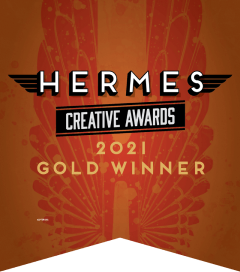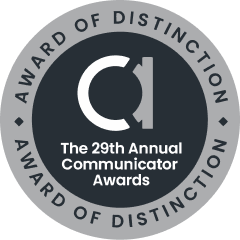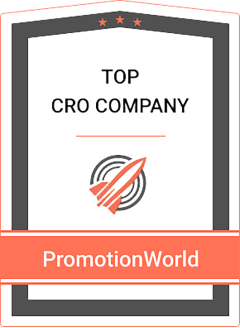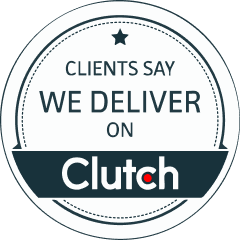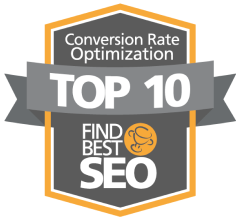Guest: Joel Goobich | Head of Sales and Marketing | Vestorly
Published author, speaker, and industry thought leader, Joel Goobich shares his insights gained from 20 years of experience in video and content marketing on how to think in a disciplined way about your marketing objectives, and then leverage each asset to get the most out of it.
Transcripts
Laura (00:05): Hi there. Glad to have you back with us for this week’s episode of The CMO’s Guide to Everything. Today, I’m excited for you to meet Joel Goobich, Head of Marketing and Sales for Vestorly, an AI-driven content curation engine. He’s also the author of the book HyperLeverage: Do More With What You Have For Exceptional Results. Joel is a veteran marketing executive, entrepreneur, and recognized industry thought leader when it comes to video marketing, content marketing, and naturally, business leverage.
Laura (00:57): Welcome, Joel.
Joel (00:59): Well, thank you for having me. I’m really excited to have some fun this afternoon.
Laura (01:03): Excellent. So you published a book last year, HyperLeverage: Do More With What You Have. Tell us a little bit about that term, hyperleverage.
Joel (01:13): Well, we all know what the word leverage is, or we think we know what the word leverage is. In fact, we rarely know how to leverage leverage, and that’s what I thought about when I was writing my book. Leverage is something that sometimes just happens, or in the situation where we think we can take advantage of something. But hyperleverage is something that businesses and even individuals can do to actually weigh the scales in their advantage. It means that you’re proactive and you’re also systematic in terms of looking for those resources, the assets, anything that you can leverage. Instead of it just happening, you actually have to work on it. You have to think about it. And that’s the difference between just regular leverage and hyperleverage. It takes it to a higher degree, a higher standard.
Laura (02:10): So when people are looking across their content, it’s creating content out of things that previously may not have looked like it would be a content source, yeah?
Joel (02:19): That’s one way, definitely. Another way that that companies or individuals, because the playing field is so leveled now in terms of content marketing, anybody from a single person LLC to a gigantic enterprise are using the same platforms, essentially, social media, email, and it’s how they are able to leverage that and able to leverage content. So for example, one of the things that Vestorly, the company I work for, that we do, and we help companies do, we help them leverage content by being able to essentially curate content from anywhere around the world. And that means you can find, anybody can find third-party content or original content or licensed content that they can use themselves in order to communicate with their audience. That’s very important, because we tend to forget that it’s the audience that really is essentially going to tell us what content they want to consume. We can think that we know what they want, but it’s only when we understand as a company or as a marketer what the consumer actually wants to read or hear or see that we are able to do our jobs better as marketers.
Laura (03:40): Sure. Is there a way of knowing that ahead of time? So often in marketing, we try guessing first. We have a sense. We think we know. It’s a little bit of a scientific process. We throw out a hypothesis, and we test it, and then we get the results back and hone it from there. Is there maybe perhaps a smarter way of doing that to really key in on what the audience is looking for before even sending out those first tests?
Joel (04:09): Well, yes and no. So Vestorly, for example … I love those yes and no answers, don’t you? I mean, that’s like, you can’t go wrong with that.
Laura (04:18): It’s okay. It’s okay.
Joel (04:18): So Vestorly uses artificial intelligence.
Laura (04:23): Right.
Joel (04:23): We create an artificial intelligence loop, so that we start by understanding through the classic marketing mechanisms of who our audience is, you can create all the different profiles, but you can also determine based on the audience what they have already been consuming in terms of content. And then you feed that into your content engine, like ours, driven by an artificial intelligence software, and it filters out, based on keywords, based on usage, and then it continuously learns.
So if I send you a article on cooking chocolate cakes, and that really resonates with you, and you’ve clicked on that, I now know that chocolate cakes, or cake, or bakery, or things like that, and I’m going to feed you more content based on that. It’s a little creepy, perhaps, in that we end up giving you the same information, perhaps, but the way our artificial intelligence works is that it’s more like a Pandora radio. You don’t get exactly the same thing every time. It expands your horizons. And as it expands, it learns other things that you are interested in, that you may not have thought that you’re that interested in.
So the answer to whether you can learn beforehand, up to a point, but you really need that artificial intelligence machine learning, using natural language processing to get the data, to create this iterative loop.
Laura (06:00): Interesting. So let’s go back to process for a minute. In your book, you reference the “DO IT” methodology. Can you break that down for us a little bit?
Joel (06:10): Absolutely. So I had a challenge. Everybody has to come up with an acronym, so I had lots of different acronyms for a methodology that I wanted to … Basically I was distilling all of the years of having been an entrepreneur, being an executive, a manager, being a executive consultant, I wanted to distill all those lessons down into one. So I came down, I came out with the word “DO IT,” because it goes back to leverage. If you don’t take action on something, you’re not going to be able to hyperleverage. You’ve got to take action. You got to be proactive.
So the D is deconstruct. And how you deconstruct is using something simple like a leverage, like a prism. When we look at a prism, light goes in, it’s singular. And when it comes out, it’s lots of different colors. So when you think of deconstructing a problem, if you don’t deconstruct it into the different components, you’re not going to be able to find those nuggets that you can leverage.
And the second part, the O, is to organize. So let’s say you’re going down the wrong path. You’re wasting too much time trying to sell coal to natural gas producers. That isn’t going to work. So you organize and you make sure that you’re only working with those areas that you can leverage the most.
I is improve. “What kind of things can I improve? Can I hire somebody? Can I buy a piece of machinery that’s going to be able to help me do things even better?”
And then T, the most important part of all of this, because we can all plan these things out, but you’ve got to take action. You got to put the foot on the gas pedal. It’s not enough just to plan it out. So that’s what a “DO IT” is. Just do it.
Laura (08:02): I love that. I love that. So in the companies that you worked with, obviously every team is a little bit different, but where do you see the most common struggles in that process?
Joel (08:16): Well, there are a couple of struggles that I see. Number one, getting back to the issue and the essence of hyperleverage, I think that what we find is we don’t get to the essentials. We end up spending a lot of time on things that are secondary or tertiary to the problem. They may be the flavor of the day or the month, but the more that you get down to your essentials, call it your niche or whatever, your true core, that’s really important. And it’s great to have ideas, but they can go down different paths, and then before you know it, nothing’s getting done.
The second thing, really important, I am a big believer in thinking backwards. And by that, I mean visualize the end, and then what is the step before the end that you need to be, and then the step before that, and the step before that? Until you are at the present tense. It’s so easy to stand right here and look forward, and the world is endless, so you never see the end. And so it’s easy then to get distracted. But if you think backwards, then you’ve already taken off all of those things that are going to distract you, and you’ve got a much clearer course of action.
Laura (09:33): Interesting. So I would guess that one of those things would be making sure you have the resources on board to get where you need to go, right? To accomplish that vision. What kinds of things in sort of this hyperleverage approach are important to make sure that you have? Is there a checkbox of resources, or is it just unique to every project?
Joel (09:58): Well, most projects are unique in and of themselves, but the process of thinking about it is systematic. And so I go back to those four things, deconstructing. Go buy yourself, or get in touch with me, I’ll send you a little prism. I have it in front of me every day to remind myself to always break things into their component parts. So that’s something that you can do on any project. Just stop. Don’t think that you have the immediate answer, which is our gut thing. We want to do things rather than think about things beforehand.
So stop, think, deconstruct. Any marketing project should do the same thing, and have such … We talk about vision, having a clear vision, but it’s really tough to have that clear vision if, like I said, if you’re only thinking forward. Because there’s just so many other things. Think backwards. Be as close to you can in terms of what you really want that final result to be. And that could be different milestones along the way. It doesn’t mean that you have to have that final, final objective right there spelled out, because things will change. And so it’s easier to break it into snackable milestones. Nothing unique in that concept, other than I’m saying start from the end and work to the beginning.
Laura (11:35): Yeah. Yeah. No, I completely get that. It makes a lot of sense. So perhaps maybe a few recommendations to leave people with, things that they can put into action now.
Joel (11:46): Well, I’m going to shift back to content. And one of the things about content, I said content is a great equalizer for any company, but you’ve got to make it part of your company DNA. And what I have found is that content, just like when I was working with video marketing, it got compartmentalized there. It’s like its own thing, but it isn’t its own thing anymore. Content is pervasive in everything we do. In fact, if it’s not part of a company’s marketing DNA, then you really have to rethink how you market things.
The second thing, I think, is what I would recommend to people. It’s to do that content audit. Sit down and think, how are you using content? Are you repurposing it? If I write a blog, I write a blog thinking that I’m going to turn that maybe into a podcast. I may turn it into a guest article that I can then put on somebody else’s site. I can obviously put it on social media, but I could also take little snippets of it. That’s one way that you can repurpose, and you have to think about how you’re going to do your marketing. Everything should be repurposed. Everything should be thinking that content is an asset. It’s a resource, needs to be used over and over again. So that’s definitely one thing that I would recommend for people to do.
The other thing is just slow down and think. Really, I get more done by taking a half hour out of my day and just thinking. Then I’m ready to go and do things. It’s really tough to shut down my email and my slack and my 700 different other ways that people are trying to invade my time, but my time is so important to me. I need to leverage my time the best. Every marketer needs to do that.
Laura (13:47): Yeah. We get so busy, and like you say, we have interruptions from all these sources, and it’s so easy to get caught up in the next task, and the next task, and the next one, or the next meeting, or what have you. But it’s really invaluable for the inspiration to strike and to think through what needs to be done to take that time every day to really examine what you have to do and what’s on the horizon, and creative approaches to things.
Joel (14:13): Yup.
Laura (14:14): Yeah.
Joel (14:14): It’s true, because what I find, it’s a little lesson I learned. I used to do improv comedy, and I wasn’t good at it, but there were certain lessons that somebody’s told you in life that just resonate with you. And so my instructor said, “If you’re stuck, you don’t know how to react to something on stage, just start walking, and it will come to you.” And that resonated with me. Whenever I am stuck trying to get an idea or get clarity, I just walk. I get up, and I walk, and walk, and walk. It used to be, when I could never sit down and have a telephone conversation. I had to always be walking. Now we’re stuck in front of our screens now, during the last year, so it’s hard for me to walk around and talk and be in front of a screen anymore. But that’s something I would suggest to people. Just try that. When you’re stuck for an idea, just start walking.
Laura (15:16): That’s great advice. That’s fabulous. And yes, I feel your pain, stuck in front of a screen, because I do that. And even when we came and were working remotely, I would do the lap of my house around the kitchen, dining room, living room, talking. But yeah. Good ideas. Good ideas. Well, I think we are about out of time, but thank you so much for joining us today. Let me let you plug your book real fast. If you want to get a copy of Joel’s book, HyperLeverage- where can they go find that?
Joel (15:46): Well, it’s on Amazon and on iBooks. So you can get it, you can download it as an ebook, or you can purchase the actual paperback book on Amazon.
Laura (15:58): All right. Very good. Very good. And also we’ll include the link to both vestorly.com and the book that you can go buy on Amazon in the description for this podcast episode. So thank you so much for your time today, Joel. We really appreciate it and hopefully we’ll see you again in the future.
Joel (16:15): Well, thank you, Laura.
Laura (16:17): Thanks for joining us today. Don’t forget to subscribe, rate, and drop us a review on iTunes. If you enjoyed this episode, I would love to hear from you. Tag me on Twitter @ CMOGTEPodcast, and let me know what you think about the show, and if there’s any topic you’d like to hear about in the future. And until next time, this is Laura Cuttill, your host from The CMO’s Guide to Everything.








